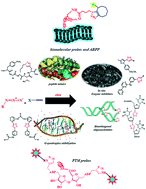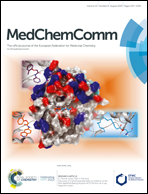Tailored therapeutics based on 1,2,3-1H-triazoles: a mini review
Abstract
Contemporary drug discovery approaches rely on library synthesis coupled with combinatorial methods and high-throughput screening to identify leads. However, due to the multitude of components involved, a majority of optimization techniques face persistent challenges related to the efficiency of synthetic processes and the purity of compound libraries. These methods have recently found an upgradation as fragment-based approaches for target-guided synthesis of lead molecules with active involvement of their biological target. The click chemistry approach serves as a promising tool for tailoring the therapeutically relevant biomolecules of interest, improving their bioavailability and bioactivity and redirecting them as efficacious drugs. 1,2,3-1H-Triazole nucleus, being a planar and biologically acceptable scaffold, plays a crucial role in the design of biomolecular mimetics and tailor-made molecules with therapeutic relevance. This versatile scaffold also forms an integral part of the current fragment-based approaches for drug design, kinetic target guided synthesis and bioorthogonal methodologies.



 Please wait while we load your content...
Please wait while we load your content...